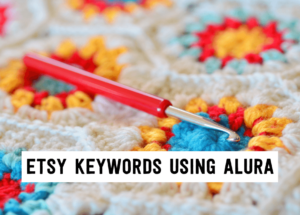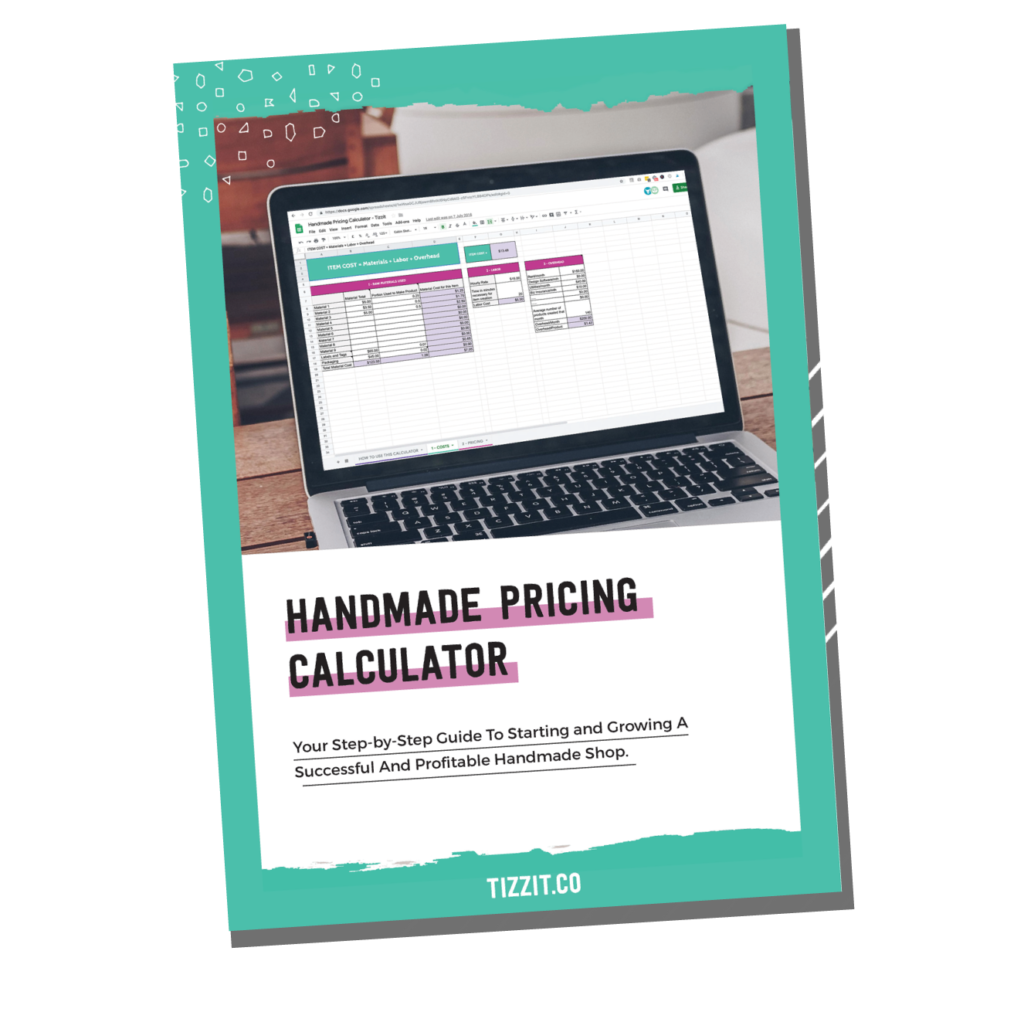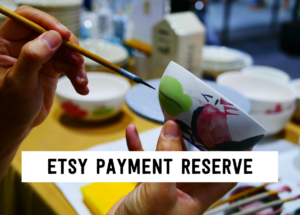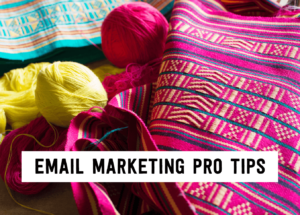
How to find the best Etsy keywords in 3 simple steps using Alura
If you want to be found in search results on Etsy, you need to optimize your product listing for SEO. And if you want to
join
There’s a famous saying that says that in every market there are 2 kinds of fools, one charges too much, the other too little.
The problem is… it’s not that easy to find that perfectly “right” price – if it even exists!
It’s a nice saying but when you create a product and decide to sell it, like say… coming up with a price for it can be… tricky. And it’s a VERY important question because without profit you don’t have a business (or not for long) – but when selling handmade items, you are also limited by time. You can’t possibly run a successful handmade shop with small profit margins, because that would mean you need to sell a LOT of products to make a decent living, you’d have to aim for a high volume of sales – and because it takes time to create your products, you can’t do that – you’d very quickly run out of time in a day!
To run a successful handmade business, you NEED a healthy, fat profit margin for every sale you make.
So… the question becomes: How much are handmade products really worth? How can you charge more while still making sales? And how do you decide how much to charge?
Let’s dive in.
Today I want to take you on a journey. The journey of pricing a product, so we can look at everything that comes into play: the science and the art of pricing – and how to make sure you can sell with a comfortable healthy profit so you’re not working 20 hours a day and paying yourself less than the minimum wage. We don’t want that.
The first thing we’ll need to tackle, your first challenge if you wish, is answering: what did it cost you to make this item?
That’s the science part, and yes, I am afraid it does mean doing math.
You have to cover your costs as a starting point, so you’ve got to calculate them. Supplies, packaging, labor, fees… It’s not a ton of fun, but after some quality time with your calculator and possibly a few spreadsheets along the way, you can absolutely get it done.
Once you’ve got your costs down, once you know what it actually costs you to create that product, you still can’t use that as a price, right? That wouldn’t generate a profit – you’d barely be covering your costs.
So what’s the next step? What’s going to take you from the cost of creating that product to its final price?
That’s when you’re faced with challenge #2, which is deciding what your profit markup will be.
Because that’s the missing part right?
You’ve your costs, the difference between your end price and your costs… is your profit markup. So how do you go about calculating that or deciding how much that should be?

Grab this free handmade pricing calculator!
use this “done for you” handmade pricing calculator to know exactly how much you should charge for your products.
You’ll find a lot of formulas online that will tell you to x2 or x1.5 for wholesale and then x2 again for retail and tada! You’ve got your price.
Most of these formulas are well-intentioned: they are trying to give you some sort of guideline as to what your profit markup should be.
The problem is that just “x2” your costs, so using x2 as your profit multiplier is an over-simplification of what it really takes to decide what your profit margin and therefore, your final price, should be.
“What’s wrong with x2?” – you may ask.
Well, let me flip that and ask you: what’s right with it? Why x2? Or x1.5? What is this number based on?
Let’s look at an example. Let’s say you are trying to price a soy wax candle and you use a formula that gets you to x2 your costs to get to your end price. You put your numbers in, costs are $6 x 2 for wholesale = $12, x2 for retail …. the figure you end up with is $24.
You think ‘well that sounds about right’ and don’t think much else of it and start selling that candle for $24.
But what if your customers were actually willing to pay $35 for that candle? Was x2 the magic profit markup number then?
It sure was not! because in that case, you’re leaving $11 of profit on the table with every single sale you make, and instead of making $29 profit, you’re only making $18 – that’s a pretty big difference.
Not just because you’re making a lot more money selling at $35 but because of what I said at the very beginning of this article:
You can’t possibly run a successful handmade shop with small profit margins, because that would mean you need to sell a LOT of products to make a decent living, which in turns means a lot more time needed to create your products, eventually just making it impossible to make a decent income with only 24 hours in a day without driving yourself mad.
To run a successful handmade business, you NEED a healthy, fat profit margin for every sale you make. Big retailer brands with factories pumping out 50 items a minute out of a big fancy machine can afford to have a lower profit margin because they can play the volume game. You can not.
And this is where the “ART” of pricing comes into play – and to REALLY understand this ART part, I’d like to give you another quick example.
Imagine a luxury, high-end designer handbag selling for $10.000, for example a Chanel bag.
Do you really think that their profit markup is x2? If you reverse engineer what those cookie-cutter formulas tell you to do, that would mean 10.000 divided 2 gives you $5000 for wholesale and divided by 2 again gives you a cost of $2500 per bag.
Let’s be clear, it does not cost Chanel or Guerlain or Dior $2500 to create a bag, it costs them MUCH MUCH less than that.
These brands don’t take their costs and x2 and tada!
Their profit markup is MUCH higher than x2.
In fact, every single business in the world has a different profit markup. For some it’s x1.5, for others, it’s x4, for others it’s x20.
Not ONE single business has the same profit markup strategy.
So, let’s regroup.
Now that we know that x2 as a profit markup is NOT a magic solution…. how are YOU meant to decide what your profit markup should be then?
The answer is in the $10.000 handbag example I just shared with you.
And before you say “but Deb, I am not Chanel or some luxury brand, I don’t have all that brand recognition behind me” – maybe not, but that’s not the point of that example.
The point I am trying to make here is that price, is just another word for VALUE.
So the question then becomes: how do you quantify value?
Well, there are 2 types of “value”.
The first one is objective value: that’s your costs, the science part we just talked about – how much “worth” is “in” that product in terms of supplies, labor, all of that.
And then there’s subjective value also known as PERCEIVED VALUE.
That $10.000 bag example? There are people in the world who perceive it as being worth that much.
I personally don’t. I am not right or wrong, they’re not right or wrong. Perceived value is subjective.
Perceived value is the perceived benefit a customer sees from getting a product MINUS the perceived cost of getting that product in the eyes of that same customer.
That is KEY because those “benefits” and “costs” are going to be different for everyone!
To me, the cost of getting a bag for $10.000 far outweighs the benefits of getting and using that product. To me, it’s not “worth it”.
To someone else, the prestige, the shopping experience, the quality of the material used, the status that comes from having such a bag might make it an absolute no brainer. Benefits, in this case, outweigh costs. They perceive it as valuable and worth that amount.
Understanding and using perceived value is by FAR the most important concept to understand when it comes to pricing your handmade items.
Because you don’t need to be Chanel or Guerlain to use perceived value.
Perceived value is WHAT allows brands like Chanel to charge thousands for a bag that does not cost thousands to make and perceived ALSO IS the KEY to increasing your handmade shop’s profit margins and simply put to making more money.
The higher the value a customer “perceives” in your products, the higher he or she will be willing to spend on it.
You’re not going to sell a leather wallet to someone’s that vegan – very unlikely, even if the price was $1, because the “cost” of buying that product for that vegan customer is not $1. It;s the cost of going against her or his values and ethics. Of course it doesn’t mean that wallet isn’t worth a dollar, just that in the eye of that person, it has no value.
Someone else might be willing to pay $150 for it because they VALUE leather as material, they VALUE the smell of it, the longevity of it, the way it ages and the craftsmanship behind your products.
When you try to work out the price of your handmade products, only the perceived value of that product in the eyes of your customers truly does matter.
The objective value, the real cost of creating those products, does not actually matter to your customers.
THE ART of pricing is the art of understanding, DEEPLY understanding who your ideal customers are, who they absolutely are not, and what they value in your products so you can communicate that value to them effectively.
Because that’s the part you absolutely can not skip: for value to be “perceived”, it needs to be communicated.
Even the best of products, with the highest quality materials, the best of everything will NOT sell itself: branding, copy and messaging, packaging, images, social proof, and many more are ways you can and must use to communicate that value.
When you learn how to price based on perceived value, not just on costs, you not only can have a very successful business that does not require you to work 20 hours a day, but you also start selling to the most beautiful of customers, who love and cherish your products and know your products are worth what you’re charging for them.
That’s a beautiful position to be in.
Take care, and until next time… aurevoir!
you might also like…
related articles

If you want to be found in search results on Etsy, you need to optimize your product listing for SEO. And if you want to

There has been a lot of talk in the Etsy community — and I mean A LOT of talk — about Etsy’s payment account reserve

Anyone who knows me knows that I am a HUGE advocate for using email marketing to grow and scale your handmade business. But you may
Sign up below and get instant access to a collection of FREE practical guides, workbooks, and checklists that will help you start, grow and profit from your handmade shop. (without pulling your hair out!).
disclaimer
subscribe to youtube
become a member
get in touch
We acknowledge and give thanks to the Budawang and Yuin people, the Traditional Owners of the land we work and live on. We pay our respects to all Aboriginal and Torres Strait Islander Peoples and elders past, present and emerging.
4-step Maker’s Roadmap System
Library of In-Depth Courses and Training
Live Monthly Coaching Sessions
A Supportive Online Community
close
We hate spam too. Unsubscribe at any time.
close
We hate spam too. Unsubscribe at any time.
close
We hate spam too. Unsubscribe at any time.

Get Instant Access to The pricing calculator